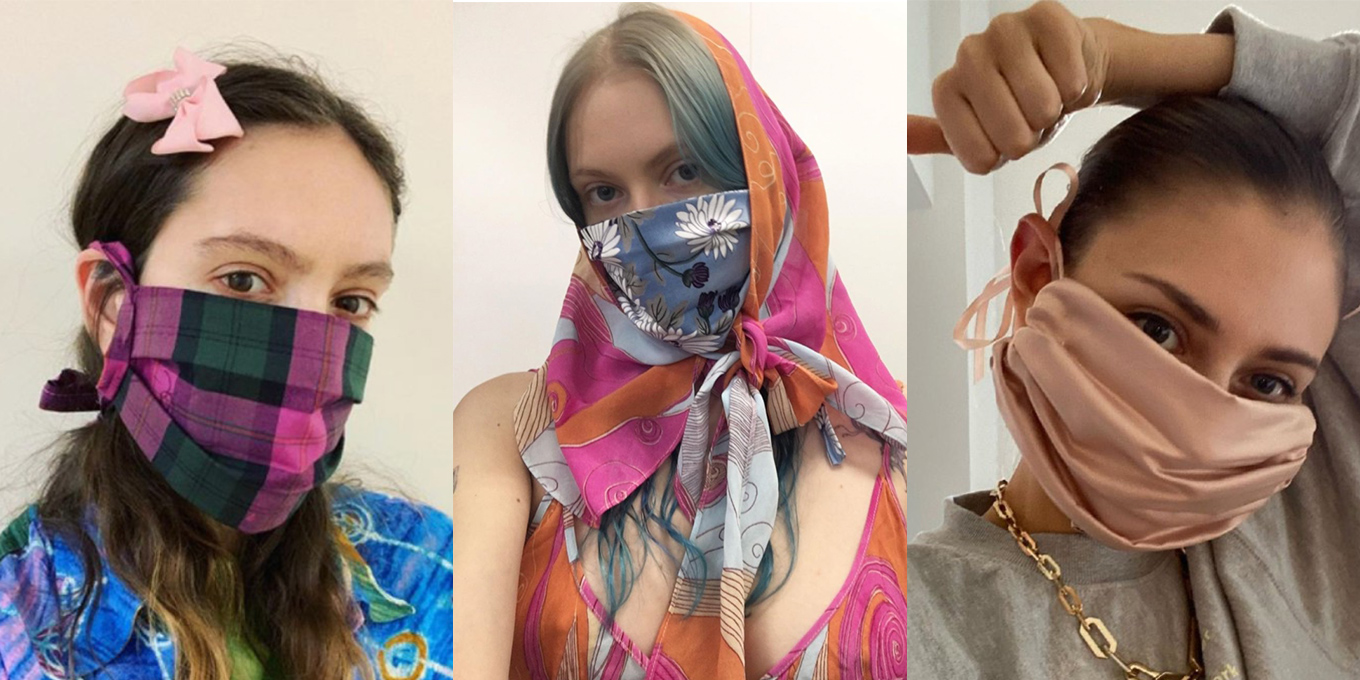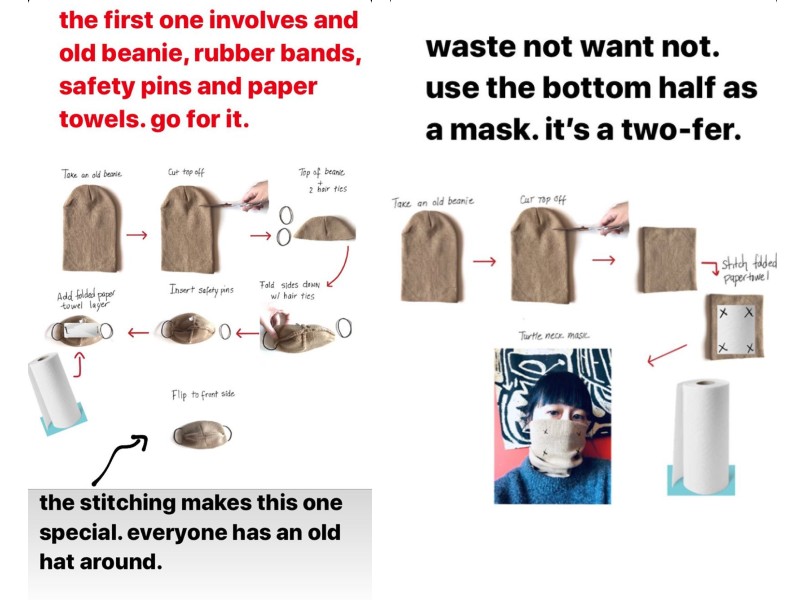Society
How To Make Your Own Non-Medical Mask
Canada’s Chief Public Health Officer has advised the use of non-medical masks in some situations, in conjunction with other COVID-19 prevention measures. Here's how to make them.
by : Erica Ngao- Apr 8th, 2020

To mask or not to mask? Citing new research on COVID-19, Canada’s Chief Public Health Officer Dr. Theresa Tam has advised Canadians that they can wear a non-medical face mask in situations where they can’t maintain physical distance (grocery shopping or on public transit, for example). This is an additional measure asymptomatic or pre-symptomatic people can take to protect others as medical face masks, such as N95 masks, need to be preserved for healthcare workers. Non-medical masks include homemade masks that are made of cloth and with pockets to insert other masks or filters.
3/9 🇨🇦’s Special Advisory Committee on #COVID19 reached consensus on NON-MEDICAL masks/FACIAL COVERINGS’ use in public as an added layer of protection to help YOU PROTECT OTHERS by reducing spread of droplets, even before you have symptoms. #LayerUpCOVIDhttps://t.co/hsS5t3xQio
— Dr. Theresa Tam (@CPHO_Canada) April 8, 2020
Wearing a non-medical mask has not been proven to protect the person wearing it, and Dr. Tam has emphasized the importance of staying home, washing your hands, covering coughs with tissues or sleeves and maintaining physical distancing of 2 metres (6 feet) away from others if you must go outside. However, wearing a mask is another way to prevent your respiratory droplets from contaminating others or landing on surfaces, and can help you stop touching your nose and mouth. For more information on how to properly wear and care for non-medical masks safely, visit the Government of Canada’s COVID-19 website.
Here are five non-medical mask tutorials that you can try at home.
No sew: Using a bandana and two hair elastics
View this post on InstagramA post shared by P.S.- I made this… (@psimadethis) on
View this post on InstagramA post shared by Cailli Beckerman Sam Beckerman (@beckermantwins) on
Sew: Using dust bags and elastics
View this post on InstagramA post shared by Jenny Walton | New York (@jennymwalton) on
Sew: A tie-dyed cloth mask
View this post on InstagramA post shared by Collina Strada (@collinastrada) on
Designer Hillary Taymour of Collina Strada shared how she makes her masks in Vogue.
No sew: Using a beanie, blazer and elastics


Tibi’s head of design Traci Bui-Amar and design director Hanna Yoo showed how to DIY face masks from an old beanie and blazer sleeves.
No sew: Using a pillowcase and a stapler
View this post on Instagram(non-medical grade, but a great way to protect you and others)
A post shared by Therma Kōta (@thermakota) on
READ MORE:
At-Home Workout Equipment That Won’t Cost a Fortune
What It’s Like to Work in an ER During a Pandemic
How to Self-Isolate With Roommates and Not Completely Lose It
Newsletter
Join our mailing list for the latest and biggest in fashion trends, beauty, culture and celebrity.
Read Next

Fashion
Pregnant Bellies Are Moving Into the Spotlight
Viva la MILF!
by : Jillian Vieira- Apr 29th, 2024

Culture
Everything Coming to Netflix Canada in May 2024
Including a new Jennifer Lopez blockbuster and the long-awaited third season of Bridgerton.
by : Patricia Karounos- Apr 29th, 2024

Fashion
8 Sparkling Jewellery Gifts to Give This Mother’s Day
Show your gratitude with pieces they’ll have forever and ever.
by : ELLE Canada- Apr 29th, 2024




